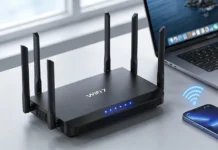According to a report from SNS Telecom & IT, the utilities sector is actively preparing for the digital shift by making major investments in the field of private 5G/4G cellular networks.
Non-Public Networks are experiencing a significant increase in global popularity across diverse industries.
The utilities sector is expected to experience a CAGR of 15% in the next 3 years. The growth trend results in almost £2 billion in total infrastructure investments between 2023 and 2026.
Private cellular networks in the utilities sector cover a wide range of applications. These include wide-area 3GPP networks that operate in sub-1 GHz bands for smart grid communications, as well as purpose-built 5G and LTE networks that offer localised wireless connectivity in important facilities.
There are several notable examples that highlight this transformative wave.
US Investments: Utility giants such as Ameren, SCE, and Xcel Energy are at the forefront of US investments when it comes to implementing 3GPP-based private wireless networks. These networks are playing a crucial role in supporting grid modernization efforts.
International Innovations: Internationally, companies such as ESB Networks in Ireland and EDF in France are implementing private mobile networks to guarantee secure cellular connectivity within their nuclear power plants and smart grid applications.
Asian Pioneers: They are making significant progress and are not far behind in terms of pioneering advancements. China Southern Power Grid utilises LTE-based private cellular systems, whereas KEPCO in South Korea has successfully implemented private 5G networks to enhance their monitoring and control capabilities.
The increase in private network adoption originates from the need for robust, secure, and effective communication systems in the utilities sector. Private cellular networks are increasingly becoming the foundation of modern utility operations and play a crucial role in various aspects such as improving grid efficiency, automating critical devices, and enabling real-time monitoring.




















